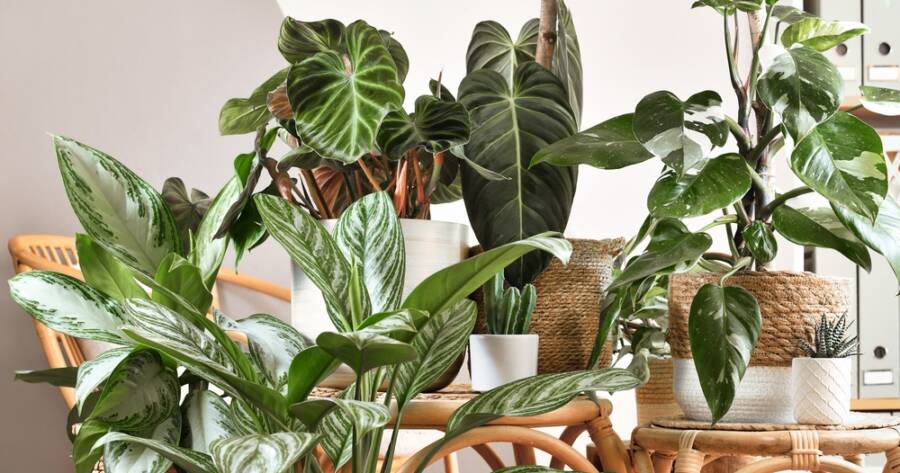Indoor gardening is a growing trend that allows people to enjoy the beauty and benefits of plants within the comfort of their own homes. Whether you have a spacious home or a small apartment, incorporating plants into your indoor space can help purify the air, improve your mood, and even enhance the aesthetic appeal of your living areas. By adding a variety of plants, you can create a lush, green environment indoors, bringing a touch of nature inside. Discover how to get started with indoor gardening and enjoy the many rewards it has to offer.
1. Choose the Right Plants
The first step to successful indoor gardening is choosing the right plants for your space. Not all plants thrive indoors, so it’s important to pick varieties that can adapt to the conditions in your home. Low-maintenance plants are ideal for beginners, and many of these varieties are well-suited for indoor environments.
Popular indoor plants that are easy to care for include pothos, snake plants, spider plants, and succulents. These plants can thrive in various lighting conditions, from bright light to lower light, and require minimal watering. If you’re looking to grow herbs indoors, basil, parsley, and mint are excellent choices, as they need less space and provide fresh ingredients for your cooking.
For homes with less natural light, consider plants that can tolerate lower light levels, such as peace lilies, ZZ plants, or pothos. Conversely, if you have access to plenty of sunlight, opt for plants like succulents, ferns, or orchids.
2. Create the Right Environment
Indoor plants, like any living organism, need the right environment to thrive. Lighting is one of the most important factors to consider when creating an indoor garden. Most indoor plants need indirect sunlight, but some may require a bit more direct light. Position your plants near windows that receive natural light, but be mindful of exposure to direct sunlight for extended periods, which can scorch the leaves of sensitive plants.
If your home doesn’t receive enough natural light, you can use grow lights. LED grow lights are energy-efficient and can provide the necessary spectrum of light for plants to photosynthesize and grow healthily. These lights can be positioned above your plants or incorporated into decorative light fixtures to seamlessly blend into your home decor.
Another key consideration is temperature. Most indoor plants thrive in temperatures between 60°F and 75°F (15°C – 24°C). Keep your plants away from drafts or places with extreme temperature fluctuations, like air conditioners or heaters.
3. Watering and Maintenance
Proper watering is essential for indoor gardening. Overwatering or underwatering can cause stress to plants, leading to yellowing leaves, root rot, or poor growth. The key to successful watering is to check the moisture level of the soil before adding more water. For many indoor plants, it’s better to allow the soil to dry out a little between waterings.
A good rule of thumb is to water thoroughly, ensuring the water reaches the root system, but allow excess water to drain out of the pot. Use pots with drainage holes to prevent water from accumulating at the bottom, as this can lead to root rot.
Fertilizing your indoor garden is also important to promote healthy growth. Use a balanced, water-soluble fertilizer to feed your plants once a month during their growing season (usually spring and summer). In fall and winter, many indoor plants go into a dormant phase, requiring less fertilizer and water.
4. Decorative Containers and Planters
One of the fun aspects of indoor gardening is choosing decorative containers and planters that complement your home decor. From modern ceramic pots to rustic wooden crates or colorful hanging planters, the right container can enhance the beauty of your plants while adding to the overall design of your space.
Consider grouping plants in various sizes and shapes for visual interest, and place them in areas where they can be appreciated. For a more bohemian style, hanging planters from the ceiling can add a whimsical touch, while sleek, minimalist planters work well in more contemporary or industrial spaces.
You can also repurpose old items as planters, such as teacups, mason jars, or wooden boxes, for a personalized, eco-friendly touch. Mixing and matching containers can make your indoor garden more dynamic and unique to your style.
5. Benefits of Indoor Gardening
Indoor gardening offers a range of benefits that go beyond aesthetics. Having plants in your home can improve air quality by absorbing carbon dioxide and releasing oxygen, making the air fresher and healthier to breathe. Some plants, such as peace lilies and spider plants, are also known to filter out toxins like formaldehyde and benzene.
Additionally, caring for indoor plants can improve your mental health and overall well-being. Studies have shown that interacting with plants can reduce stress, boost mood, and improve concentration. The act of nurturing plants can provide a sense of accomplishment and help create a calming, peaceful atmosphere in your home.
Transform Your Home with the Beauty and Benefits of Indoor Gardening
Indoor gardening is an enjoyable and rewarding hobby that can transform your living space into a more vibrant, healthy, and inviting environment. With a variety of plants to choose from, the right tools, and a little attention to detail, you can create a thriving indoor garden that reflects your personal style and enhances your well-being. Whether you’re looking to add greenery to your home for aesthetic purposes or improve air quality, indoor gardening offers endless possibilities to connect with nature inside your home.

